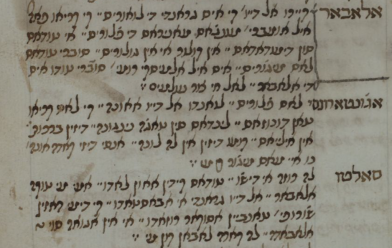CES
15. Cinco años ya va hacer (CES)
One of the widespread Judeo-Spanish songs of the early twentieth century that disappeared from the contemporary repertoire. In his pioneer fieldwork in the Balkans, Wiener documented in 1898 a rather complete version of the text of this song (Wiener 1903/4, no. XVIII). Wiener’s informants for this song were “professional singers at weddings in Sofia, Bulgaria,” which appears to indicate that the song was of rather modern creation and circulated among “professional” singers. Later on Levy (1959- 1973, vol. I, no. 41, place of origin unknown) documented a variant of very similar length. Attias (1972, no. 17) cited the version published by Wiener with an additional stanza he received from an informant from Sarajevo. Wiener and Levy’s versions share a number of stanzas including the main theme of an unfortunate love affair with a young man from Izmir. The version in this recording is shorter, and includes no mention of the Izmirli. The last stanza, which cites an inscription on the tombstone of the girl in love, is common to all versions.
Cinco años ya va hacer also appears as a melodic incipit for the Hebrew poem Yah el magen ve’ozer (acrostic Yehuda) one of various piyyutim adapted to the melodies of songs in Ladino appearing in collections of Hebrew poetry from late-nineteenth- and early twentieth-century Jerusalem (Incipitario, no. 142). The earliest of these songsters in 60 which our song is mentioned is Sefer Kol zimrah, edited by Yehudá Castel (or Castil, 1871- 1936) and published in Jerusalem in 1896/7.
The melody of Cinco años ya va hacer as notated by Levy coincides with the various field recordings of the piyyut Yah el magen ve’ozer, such as the one made in 1937 by Robert Lachmann with the Elnadav family from Jerusalem (NSA Y 06916) and those included in the website www.pizmonim.org. The recording by CES is, on the surface, musically different from the melody notated by Levy and maintained orally in the piyyut tradition. However, a closer musical analysis reveals that there are some structural and certainly modal relations between them. Both songs, in Ladino and in Hebrew respectively, are in makam Rast, as specified by the Hebrew songsters, even though Levy wrote it down in major, because he did not consider microtonal inflections in his transcriptions. The pattern of melodic repetitions and the cadential pauses in the third and fifth degrees are the features that disclose that the two melodies are related.
Cinco años va hacer
que yo tengo un displacer,
que me quemί entre mί
sin saber de ande es.
A la cama me echo,
los ojos al cielo ‘cho.
Que me salve d’est’ amor,
que buraca’l corazón.
La noche te desposί
a la mañana me devo ir[?]
Entre guertas y vergeles
Faciendo l’amor mos vi.
Cuando yo me va muerir
a la piedra va ‘scribir,
que la melden y que lloren
y que se acodren de mí,
que la melden y que lloren
que’l amor me hizo salir.







